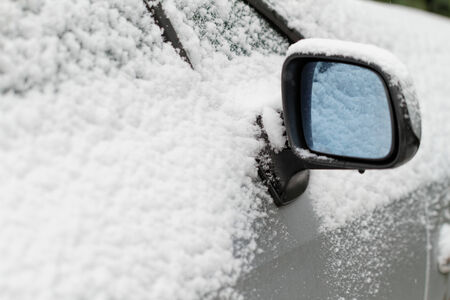Battery Check and Replacement
When preparing your car for winter, one of the most critical maintenance steps is checking your batterys health. Cold temperatures can significantly reduce a batterys ability to start your engine, leaving you stranded at the worst possible time. To avoid this, begin by testing your batterys charge levels using a reliable voltmeter or have it checked at an auto parts store. Look for any signs of corrosion on the terminals and clean them thoroughly with a mixture of baking soda and water to ensure a solid connection. If your battery is more than three years old or struggles to hold a charge, consider replacing it before winter sets in. Proactively addressing battery issues will help guarantee reliable starts and peace of mind during harsh American winters.
Tires: Traction and Pressure
When preparing your car for winter, ensuring your tires are ready for harsh conditions is critical. The first step is to inspect tread depth. Tires with worn-out treads significantly reduce traction on icy or snowy roads, increasing the risk of skidding. A quick way to check tread depth is the penny test—insert a penny into the tread with Lincoln’s head upside down; if you can see all of Lincoln’s head, it’s time for new tires.
Switching to Winter Tires
Depending on where you live in the U.S., switching to winter tires can be a game-changer. Winter tires are designed with special rubber compounds that remain flexible at low temperatures and have deeper tread patterns for improved grip on snow and ice. If your region experiences frequent snowfall or freezing rain, investing in winter tires enhances both safety and performance.
Tread Depth Guidelines
| Tread Depth (inches) | Condition | Recommended Action |
|---|---|---|
| > 4/32″ | Good | No action needed |
| 2/32″ – 4/32″ | Worn | Monitor closely or consider replacement |
| < 2/32″ | Unsafe | Replace immediately |
Adjusting Tire Pressure for Cold Weather
As temperatures drop, tire pressure decreases—typically by about 1 PSI for every 10°F drop in air temperature. Under-inflated tires reduce fuel efficiency and compromise handling, especially on slippery roads. Check your tire pressure at least once a month during the winter using a reliable gauge, and always inflate to the manufacturer’s recommended PSI (found on the driver’s side door jamb or in your owner’s manual). Properly inflated tires maximize contact with the road and enhance overall safety.

3. Wipers and Visibility
Ensuring optimal visibility is critical for safe winter driving in the U.S., especially when facing snow, sleet, or icy rain. Start by inspecting your wiper blades—if they leave streaks or show signs of wear, replace them with high-quality, winter-rated blades designed to handle harsh conditions. Next, top off your windshield washer fluid with a freeze-resistant formula that can withstand subzero temperatures; standard fluids may freeze on contact with a cold windshield, drastically reducing visibility. Don’t overlook your vehicle’s defrosters either—test both front and rear systems to confirm they’re functioning properly, as these are essential for quickly clearing fog and frost from glass surfaces. By proactively addressing wipers and defrosting systems, you’ll maintain clear vision even in challenging winter weather, significantly improving your safety on the road.
4. Fluids and Engine Care
Proper fluid management is a cornerstone of winter vehicle preparation. As temperatures drop, the performance and viscosity of your car’s essential fluids are affected, directly impacting engine health and safety. To ensure reliable operation during cold months, it’s crucial to check and maintain the correct levels and types of antifreeze, engine oil, and brake fluid.
Antifreeze/Coolant
Antifreeze prevents your engine from freezing in low temperatures while also protecting against corrosion. Verify that your coolant mixture is suitable for winter—typically a 50/50 mix of antifreeze and water works well for most U.S. climates. Use a hydrometer or consult your owner’s manual to confirm the freeze point meets local winter conditions.
Engine Oil
Cold weather thickens oil, making it harder for your engine to turn over. Switching to a winter-grade oil with lower viscosity (such as 5W-30 or 0W-20) ensures proper lubrication during startups and reduces wear on critical components.
Brake Fluid
Brakes are vital for safe winter driving. Ensure your brake fluid is at the correct level and hasn’t absorbed moisture, which can lower its boiling point and reduce braking efficiency in freezing conditions.
Recommended Winter Fluid Checkpoints
| Fluid Type | Winter Action | Frequency |
|---|---|---|
| Antifreeze/Coolant | Check mixture ratio and freeze protection level | Start of season, then monthly |
| Engine Oil | Switch to recommended winter-grade viscosity | Every oil change or 5,000 miles |
| Brake Fluid | Check level; replace if contaminated | Annually or as needed |
Key Takeaway
Treating fluids as an integral part of winter prep not only enhances engine performance but also extends the life of your vehicle’s components. Regular checks and timely replacements are simple steps that deliver significant peace of mind on icy roads.
5. Emergency Kit Preparation
When winter hits, unpredictable weather and challenging road conditions can leave even the most prepared drivers stranded or delayed. Thats why assembling a comprehensive winter emergency kit is essential for anyone hitting the road during cold months in the U.S. Start with the basics: pack warm blankets or thermal sleeping bags to guard against hypothermia if you’re stuck without heat. Non-perishable food items like energy bars, trail mix, and bottled water are vital to sustain you during unexpected waits. A reliable flashlight with extra batteries ensures visibility at night or during heavy snowfall. Jumper cables are crucial for reviving a dead battery, which is more common in low temperatures. Don’t forget other critical items such as an ice scraper, small shovel, first-aid kit, multi-tool, phone charger, and reflective triangles or flares to alert other motorists if you’re stopped on the roadside. These essentials not only offer peace of mind but can make a real difference in safety and comfort when facing winter’s toughest moments.
6. Exterior and Undercarriage Protection
Protecting your car’s exterior and undercarriage is crucial for surviving harsh American winters. Road salt, sand, and chemicals are commonly used to melt ice but can accelerate paint damage and corrosion. Start by thoroughly cleaning your car’s exterior with a high-quality car wash soap to remove existing dirt and contaminants. Once clean, apply a durable wax or paint sealant to create a protective barrier against moisture and road salt. Don’t overlook the importance of frequent washes during winter—especially after snowstorms—to rinse away corrosive materials before they cause lasting damage.
Pay special attention to your vehicle’s undercarriage, as this area is most vulnerable to rust from accumulated salt and grime. Consider scheduling regular undercarriage washes at local car washes that offer high-pressure spray systems specifically designed for winter conditions. Inspect the underside of your car periodically for early signs of rust or buildup. Address any issues promptly by treating minor rust spots with appropriate products or seeking professional help to prevent structural damage.
Investing time in exterior and undercarriage protection not only preserves your vehicle’s appearance but also extends its lifespan, helping you avoid costly repairs down the line. This proactive approach is especially valuable if you plan to keep your car long-term or maintain its resale value in the competitive U.S. market. By integrating these simple maintenance habits into your winter routine, you ensure your vehicle remains safe, reliable, and visually appealing throughout the coldest months.


